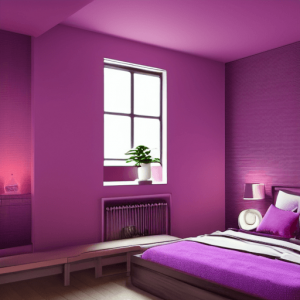Augmented reality can be used in various ways to enhance the interior design process. One of the most popular uses is for helping clients visualize what a space might look like with a new decorating scheme. The ability to see how an object looks in an environment makes it feel more real and helps clients understand how it will work in their space. This information can lead clients to pay a decorator for further services if they are not satisfied with the results on their own, or it may provide them with enough information about what their final product may look like that they no longer need help from a professional.
What is augmented reality?
Augmented reality is a technology that allows users to view and interact with digital content in the real world. This can be done through a variety of devices, including smartphones, tablets, and dedicated AR headsets.
AR has a wide range of potential applications in the field of interior design. For example, it can be used to create virtual showrooms that allow customers to see how furniture would look in their homes before making a purchase. It can also be used for more interactive design consultations, allowing clients to see how different design choices would impact the overall look and feel of their space.
In the future, augmented reality could even be used to create fully immersive virtual reality environments that allow designers to create and experience proposed designs firsthand before they are built. The possibilities are truly limitless!
The Future of Interior Design
AR has the potential to change the way we design and experience interiors. With AR, you can see how furniture and décor would look in your space before you buy it. You can also experiment with different color schemes and layouts without having to actually make any changes to your home.
AR can also help you visualize what a room would look like after a renovation. This is especially useful for people who are considering making major changes to their homes, such as adding an addition or knocking out a wall.
AR is still in its early stages, but it has already begun to revolutionize the world of interior design. As technology continues to develop, we can only imagine the possibilities that will be made available to us. We are truly on the cusp of a new era in interior design.

Using Augmented Reality in Interior Design
Augmented reality is still in its early stages, but it has already begun to change the landscape of interior design. With augmented reality, designers can create virtual prototypes of their designs and allow clients to experience them before any construction takes place. This helps to ensure that everyone is on the same page and that the final product meets the client’s expectations.
Augmented reality can also be used for educational purposes. For example, if a client is unsure about a certain style of furniture or wants to see how a particular color will look in their space, they can use an augmented reality app to get a better idea. This technology can also be used to teach people about the history of design or how to properly care for their furniture.
As augmented reality continues to evolve, it will become an increasingly important tool for interior designers. It has the potential to revolutionize the way we design and experience spaces.
Pros and Cons of using Augmented Reality in Interior Design
There are many potential benefits to using augmented reality (AR) in interior design. For example, AR can allow designers to create virtual mockups of proposed designs, which can be viewed from any angle and interacted with to get a realistic sense of how the space will look and feel. This can be especially helpful for complex or difficult-to-visualize projects. AR can also be used to create interactive experiences for clients, such as being able to see how furniture would look in their homes before making a purchase.
However, there are also some potential drawbacks to using AR in interior design. One is that it can be expensive and time-consuming to create AR experiences, so it may not be practical for all projects. Additionally, some people may prefer more traditional design methods or may not be comfortable with using technology in this way.

Conclusion
Augmented reality has the potential to change the way we interact with our surroundings, and interior design is one area where it could have a big impact. With AR, you would be able to see how furniture and other items would look in your home before you buy them, making it easier to find pieces that fit your style and space. This technology is still in its early stages, but as it develops, it could revolutionize the way we design and shop for our homes.



